The business world spins at breakneck speed these days. Trade deals change and tariffs alter global commerce constantly. My experience as a CEO shows how a simple 10% tariff on Chinese products can spark countermeasures. These changes affect computer prices and production abilities across the board.
Smart news consumption doesn’t mean reading every international business story out there. Markets show more volatility now and regulations change faster than ever. Many executives find it hard to pick out significant updates from the noise. We created a step-by-step process to filter and act on news that truly affects our business choices.
This piece will show you our tested framework. You’ll learn to spot, analyze, and act on business news that matters to your company’s growth. The quickest way to cut through information overload focuses on news you need to know.
Key Business News Categories
Recent market monitoring shows that nearly 60% of CEOs expect global economic growth to improve next year. This positive outlook shows a big jump from 38% last year. Our latest economic indicators reveal good news across many sectors.
The market and economic landscape tell an interesting story. The Business Roundtable CEO Economic Outlook Index jumped 12 points to reach its highest level in over two years. The survey’s results show three important trends:
- Capital investment plans went up by 10 points
- Hiring intentions grew by 12 points
- Sales expectations rose by 13 points
The last five years saw 40% of companies start competing in new sectors. Businesses now face new challenges as they adapt to changing market dynamics. The electric vehicle market serves as a prime example, where car manufacturers had to rebuild their operations from the ground up.
American businesses now pay about $300 billion each year due to federal regulations. Mid-sized companies feel the heaviest burden with compliance costs that are 40% higher than other-sized businesses. These expenses come from fixed compliance rules, tiered regulatory systems, and different enforcement patterns based on company size.
Different regions feel regulatory changes in different ways. To cite an instance, German and French CEOs report higher costs from green investments compared to just one-fifth of US CEOs. Chinese mainland’s CEOs see better returns, with 60% reporting positive gains from these investments.
How to Filter Important News
A well-laid-out approach helps us filter through the endless stream of business news. We used a proven impact assessment framework to measure how news affects stakeholders in different ways. This framework helps us review stories based on their potential effect on operations, stakeholders, and financial outcomes.
The impact assessment framework looks at these key criteria:
- Financial implications and market position
- Stakeholder relationships and reputation
- Operational efficiency and supply chain
- Regulatory compliance and risk exposure
All but one of these corporate leaders have already put contingency plans in place to deal with potential disruptions from expected changes. Companies that take this proactive stance keep up with market changes instead of just reacting to them.
We use a sophisticated relevance scoring method to spot news that needs immediate attention. The scoring system gets into multiple factors, including source credibility, reach percentage, and content categorization. Trade publications and general news take priority in our assessment when we filter essential news sources by specific criteria.
High-quality news filtering saves substantial time in media monitoring and stakeholder briefing creation, according to our research. Companies that meet their strategic targets through effective news filtering perform better than their peers by up to 9 percentage points in total shareholder returns.
Source validation, content categorization, and impact measurement are the foundations of the relevance scoring process. We prioritize stories from credible sources with significant reach metrics rather than consuming every piece of news. This systematic approach shows that about 40% of corporate leaders feel better prepared for market disruptions.
Time-Saving News Analysis
Successful CEOs analyze news before sunrise. The core team of executives starts their day between 4 a.m. and 5 a.m. and spends their first waking hours on detailed news reviews. JPMorgan’s CEO dedicates two hours to reading five newspapers, analyst reports, and speech transcripts early in the morning.
A CEO’s morning routine works best with uninterrupted focus time. Regular meetings and requests flood in after 9 a.m., which makes early morning hours a vital window to read without distractions. The most effective routines combine news analysis with physical activity. CEOs report better mental clarity and less stress on days they exercise.
These executives rely on carefully selected information sources:
- The New York Times, Wall Street Journal, and Financial Times to cover world, political, and business news
- Industry-specific trade publications to learn about their sectors
- Email newsletters, which take up 28% of their weekly reading time
Digital tools have revolutionized news scanning efficiency. About 60% of executives now use social media to consume news, with Twitter being their top platform. Data visualizations and charts grab their attention first, as 68% of executives say these elements pull them into content.
AI-powered news monitoring tools now scan thousands of information points daily. These platforms send custom alerts through preferred channels and help avoid email overload. Modern news aggregation services let executives process big amounts of data quickly. They spot patterns and anomalies that could take days to find manually.
Taking Action on News
Business leaders need a well-laid-out approach to make informed decisions based on business news. 28% of business leaders feel paralyzed by uncertainty. This hesitation affects strategic planning, though the most successful executives have developed systematic methods to overcome it.
Decision-making process
79% of business leaders see uncertainty as a gateway to new possibilities and opportunities. Notwithstanding that, a clear action framework makes all the difference. Successful CEOs spend their mornings on strategic thinking and deal analysis. They accomplish critical tasks early, which without doubt sets the stage for productive afternoon meetings.
News has a direct effect on investor decisions. Leaders must update, adapt, and forecast returns within their time and resource limits. Investor screening follows specific filters that focus on news affecting portfolio or investment objectives.
Team communication strategy
A systematic approach with clear channels and consistent delivery helps news communication work better. Successful organizations put these key elements into practice:
- Start briefings on time and keep them concise
- Share priorities and main focus areas daily
- Review team commitments and progress regularly
- End communications with actionable next steps
61% of companies need better cross-functional collaboration to achieve strategic goals. Modern communication strategies focus on transparency and regular updates, unlike traditional approaches. Companies that make evidence-based decisions are 6% more productive and 5% more profitable.
Whatever the company size, clear communication helps employees connect with the company’s vision. This connection boosts job satisfaction and loyalty. Live analytics help track communication effectiveness to ensure messages reach their intended audience and achieve desired outcomes.
Conclusion
Modern executives must master business news management. Our research shows how well-laid-out news analysis and strategic morning routines help leaders make better decisions. Companies that use systematic news filtering achieve 9 percentage points higher shareholder returns than their competitors.
Reading headlines isn’t enough for smart news consumption. Successful leaders amid uncertainty use specific frameworks and dedicate their early hours to analysis while keeping team communication channels open. Their achievements come from identifying relevant news and taking appropriate action.
Note that business news should spark action, not create paralysis. Successful leaders turn market movements into opportunities, even though 28% of executives feel overwhelmed by uncertainty. The path forward is simple – select three key news categories that matter to your business, set up a morning routine for analysis, and create clear team update channels. These basics will strengthen your strategic decision-making foundation.








Leave a Reply